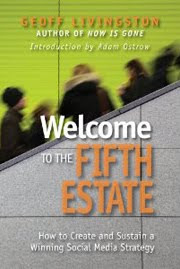 According to the Irish Times, one secondary school is getting rid of school books and replacing them with iPads. The iPads will be phased into use starting September, when all 90 first-year students at the college will be given the option of using the Apple machine instead of a bag full of school books.
According to the Irish Times, one secondary school is getting rid of school books and replacing them with iPads. The iPads will be phased into use starting September, when all 90 first-year students at the college will be given the option of using the Apple machine instead of a bag full of school books.“We received huge support from the teachers and parents for the idea – we had 96 percent support – but in no way is this obligatory," school principal Jimmy Finn told the publication. “Parents have the choice to go with the iPad or school books like it was always done.”
The story could mark a dramatic step in education, not only in Ireland but in the United States. One of the cost-containment ideas being employed by the school is to spread the cost over three years and including it in the tuition. They estimate the full package will cost 700 pounds (inclusive). In the States, costs might be as little as $200 more per year and save money.
In the United States, the average cost of school books per semester is $400 to $900 and up or $2,400 to $3,200 or more (depending on degree). Textbook savings wouldn't be the only benefit. Publishers that ordinarily charge $100 or more per book to make up the high cost of color printing, durable covers, and modest distribution could save significantly and possibly even generate more money for textbook authors by making the material more public than school book stores.
Textbook replacement is only the beginning of tablets in education.
Tablets could, in effect, allow professors to automatically share handouts, documents, reading lists, and even presentations immediately following class. In some cases, certain programs actually deliver better context, allowing teachers to supplement it.
This isn't the only place education could change. In China, students are replacing notepads with tablets. They are the perfect tool for musical instruments, design tools, and artistic inspiration. Personally, I see the potential as much more significant, giving teachers and students immersive education.
 For example, students could record a lecture and/or take notes. A teacher could then allow students to download Romeo & Juliet, take home the movie (normally played in class), and some supplements depending on the subject being covered. The student could even complete an assignment using the same tool, and then email it to the teacher.
For example, students could record a lecture and/or take notes. A teacher could then allow students to download Romeo & Juliet, take home the movie (normally played in class), and some supplements depending on the subject being covered. The student could even complete an assignment using the same tool, and then email it to the teacher. Having all the assignments in hand could help the teacher frame additional discussion points, and possibly, even open up connected subjects such as the historical relevance of the play. Or whatever they like. And so on and so forth.
There are iPad and tablet pilot programs in the U.S. as well as some push back.
Even Vineet Madan, vice president of McGraw-Hill Higher Education eLabs, says U.S. schools are tablet ready. And, believe it or not, teachers' unions might be the biggest road block to integrating tablets. Why? Tablets may provide greater scrutiny over class material. Some are concerned about the cost (even if it will save dollars), the training some teachers will need, and what age to introduce the technology.
However, despite setbacks in some areas, some schools in the United States are moving ahead. The Trinity Academy for the Performing Arts in South Providence, for example, has been adding iPads. There is also a pilot program in Missouri. And another in Andover. And other in Boston. And another on the California side of Tahoe. And Burlington. And Maine.
Why I'm a proponent of iPads and tablets in the classrooms.
I already have firsthand experience. After giving my 4-year-old daughter an old iPhone (calling is not active) and seeing her play games like Super Why! and, even though she is a year or two off, Stack The States, she is even more enthralled with starting kindergarten this fall. I've also walked her through programs on my iPad, like Solar System For iPad or thumbing through a collection of art at the Louvre. Those, of course, are only a few.
The point is that children are never too young to supplement their education. Sure, there was a time that my daughter reminded me she was 4 and bit the phone for no apparent reason (maybe she was mad at the pigs on Angry Birds). But other than one incident, she has been responsible with it, enough so that I'm considering iPads (with the stipulation of non-gaming) for both children regardless of next year's classrooms. The learning curve is very low; the interest is very high. What's not to like? We might not be all that far off from A Young Lady's Illustrated Primer.



























